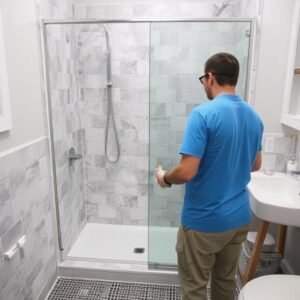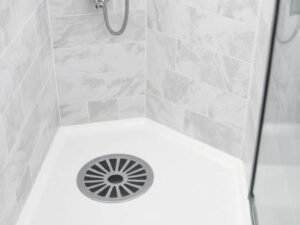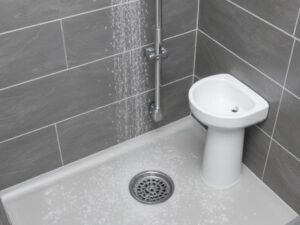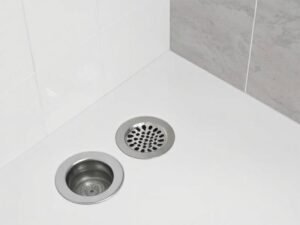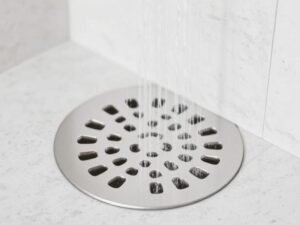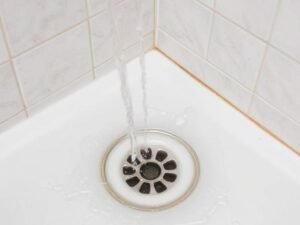Choosing the right drain type for your walk-in shower is crucial for style, performance, and hygiene. In this comprehensive guide, we explore linear drains, wall drains, square drains, invisible drains, and more—including expert solutions from Noahhometech.
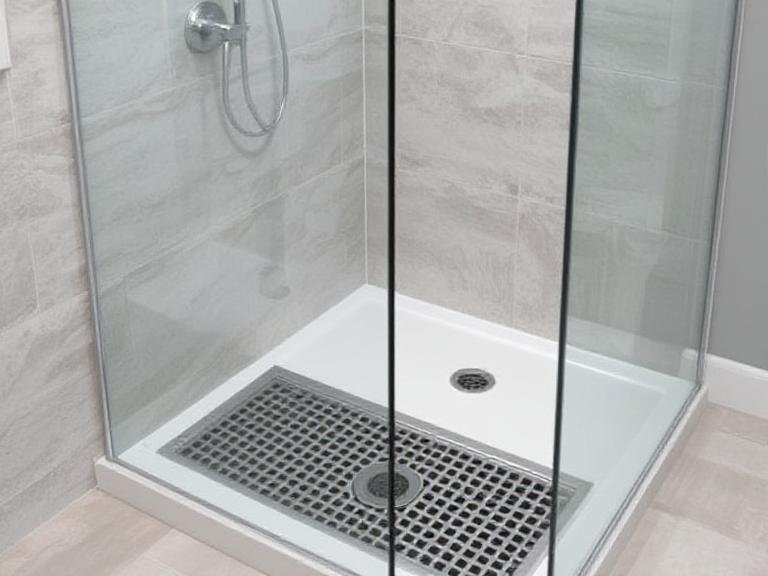
Why the Right Shower Drain Matters
The shower drain is more than a utility feature—it impacts your bathroom’s design, cleanliness, and overall comfort. The right drain ensures:
- Efficient water flow: Prevents standing water and mold buildup.
- Odor control: Modern drains come with odor-resistant features.
- Minimal maintenance: Easy-to-clean covers and removable grates simplify upkeep.
- Aesthetic integration: Invisible or wall drains can make the bathroom look seamless.
Main Types of Walk-In Shower Drains
1. Linear Shower Drains
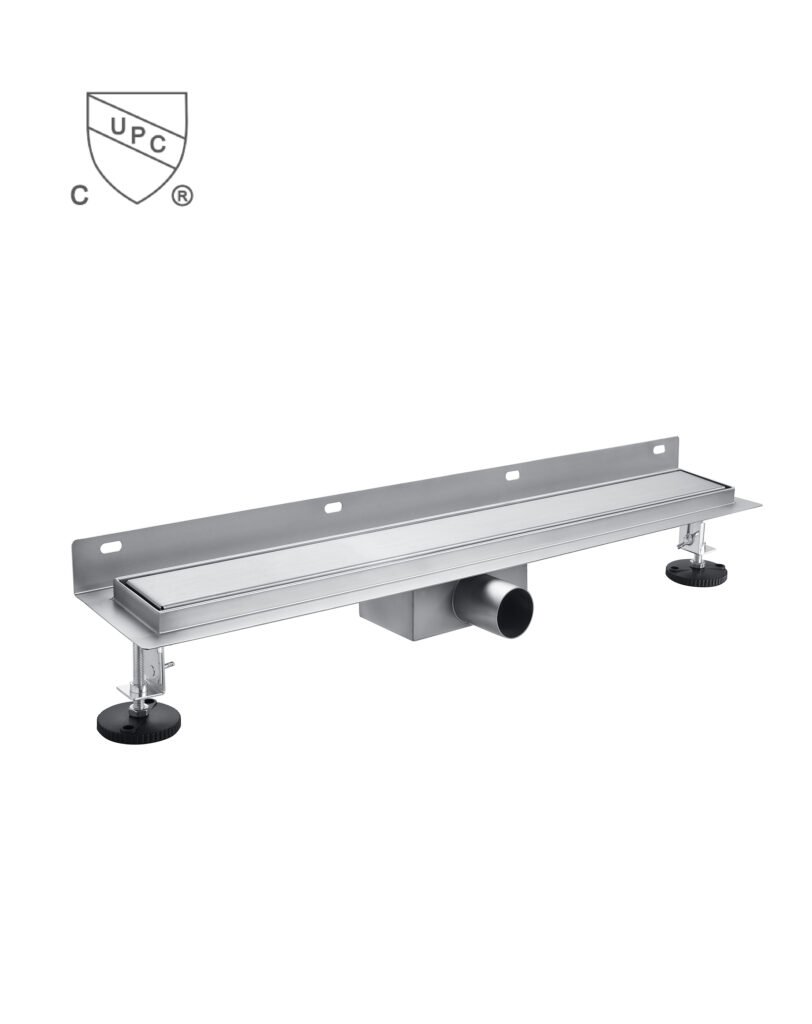
Linear drains are long and narrow, running along one side of the shower. They allow for a single-slope floor design and are popular in luxury bathrooms.
- Pros: Modern look, easier to tile, high water capacity
- Cons: Slightly higher cost than standard center drains
2. Square & Center Drains
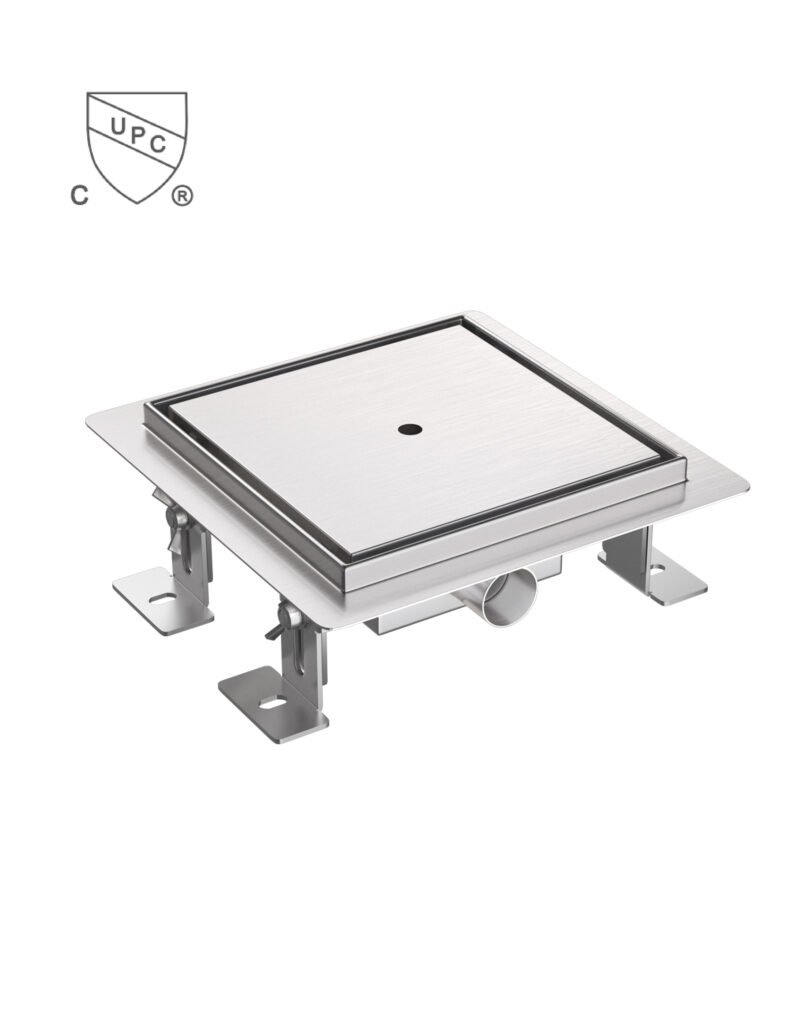
Square or round center drains are traditional and affordable. They require a four-way floor slope to direct water to the center.
- Pros: Cost-effective, widely available
- Cons: Can disrupt tile patterns, requires more precision in floor slope
3. Wall-Mounted Drains
These drains are installed along the wall, making them nearly invisible. Perfect for minimalist and barrier-free showers.
- Pros: Seamless look, no center floor cutout
- Cons: Requires careful wall waterproofing
4. Invisible Drains
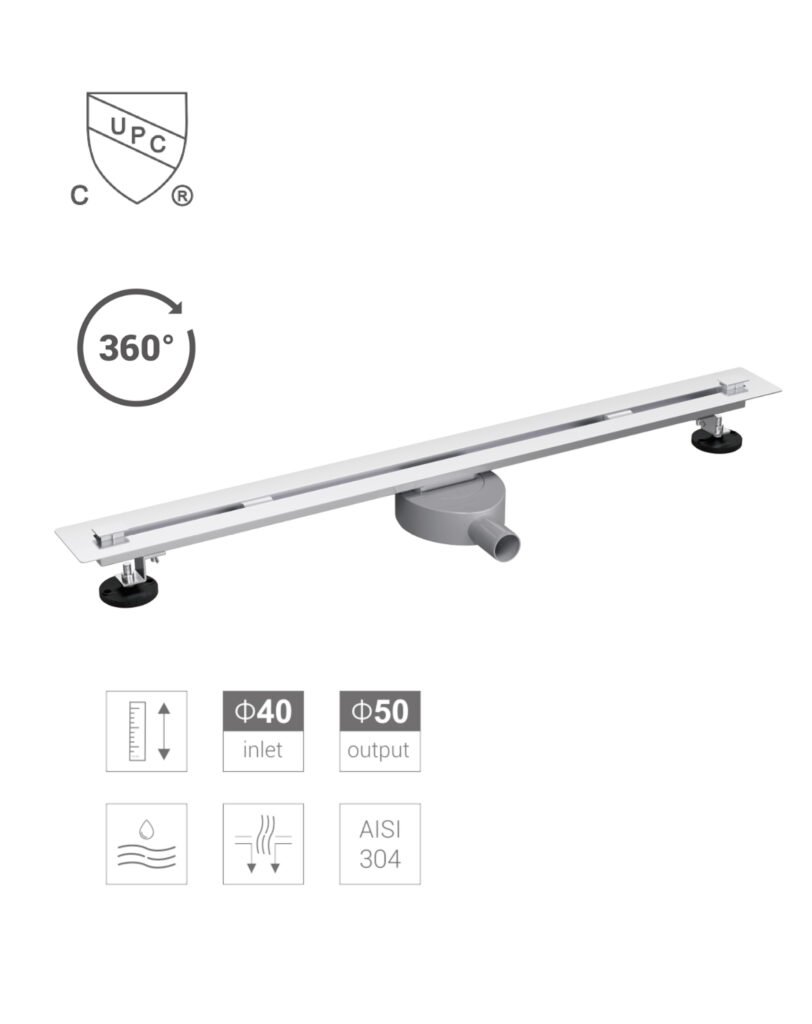
Invisible or tile-in drains use the same tile surface as your shower floor for a nearly hidden appearance.
- Pros: Ultimate minimalist aesthetic
- Cons: Requires precise tile cutting and installation
5. Vertical Strip & Triangular Drains
Great for compact spaces, vertical strip and corner drains maximize space utilization while maintaining functionality.
Noahhometech Product Line
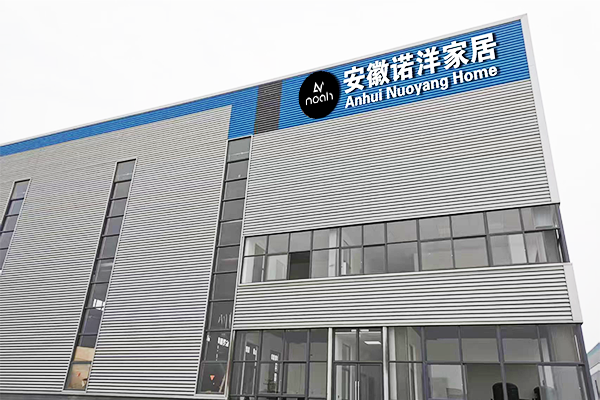
Noahhometech is a leading shower drain manufacturer, known for high-quality, visually striking drainage solutions for bathrooms, hotels, and commercial spaces. Their OEM and ODM services include custom designs using durable 304 stainless steel and PVD finishes.
Available Products:Standard type shower drain, Odor-Resistant type, Ultra-Thin, Invisible, Insert Wall, Linear Wall, Strip Vertical, Square, and Triangular bathroom drains.
Benefits of Choosing the Right Drain
- Hygiene: Prevents bacterial growth and keeps the shower fresh.
- Design Flexibility: Linear and wall drains open up new tile layout possibilities.
- Durability: Stainless steel drains resist corrosion and last for years.
- Customization: Manufacturers like Noahhometech offer tailored solutions for unique projects.
Installation Considerations
Proper Slope
A minimum slope of 1/4 inch per foot is required to ensure water drains effectively toward the outlet.
Waterproofing
Use a high-quality waterproof membrane behind tiles to prevent leaks and water damage.
Accessibility
For barrier-free showers, linear or wall drains make it easier to maintain a flush floor surface for wheelchair access.
Comparison Table
| Drain Type | Design Appeal | Ease of Cleaning | Cost Level | Best For |
|---|---|---|---|---|
| Linear | Modern & Sleek | Easy | $$$ | Luxury & contemporary bathrooms |
| Square/Center | Traditional | Moderate | $ | Budget-friendly projects |
| Wall | Seamless | Easy | $$$ | Minimalist and barrier-free showers |
| Invisible | Tile-Integrated | Moderate | $$$ | High-end luxury bathrooms |
| Vertical/Triangular | Space-Saving | Easy | $$ | Small bathrooms or corner installations |
FAQs & References
1. Which shower drain is easiest to install?
Square center drains are the easiest and most common, but linear drains are increasingly DIY-friendly with pre-sloped pans.
2. Are invisible drains worth it?
Yes—if you want a sleek, designer look and are willing to invest in precise installation.
References:

